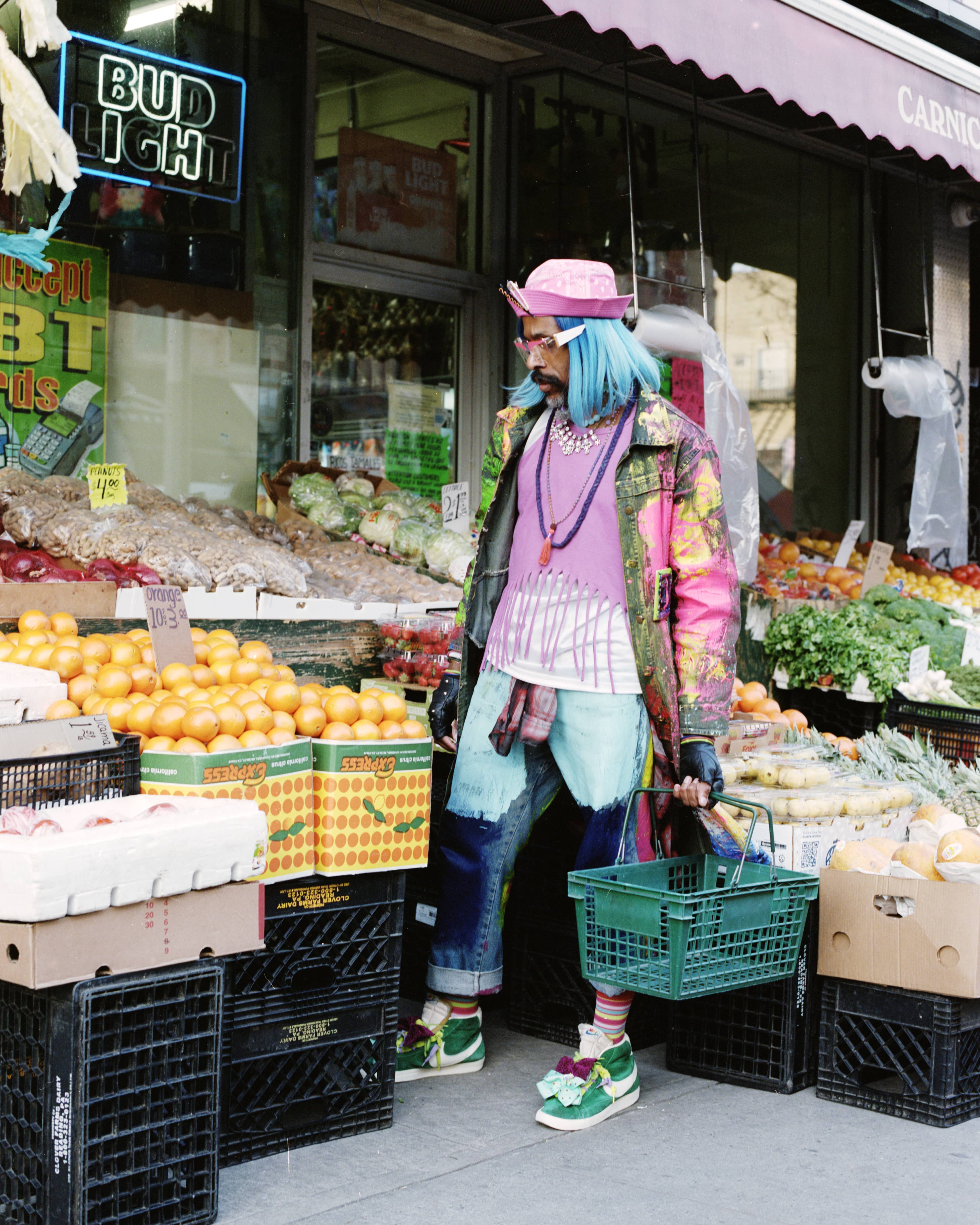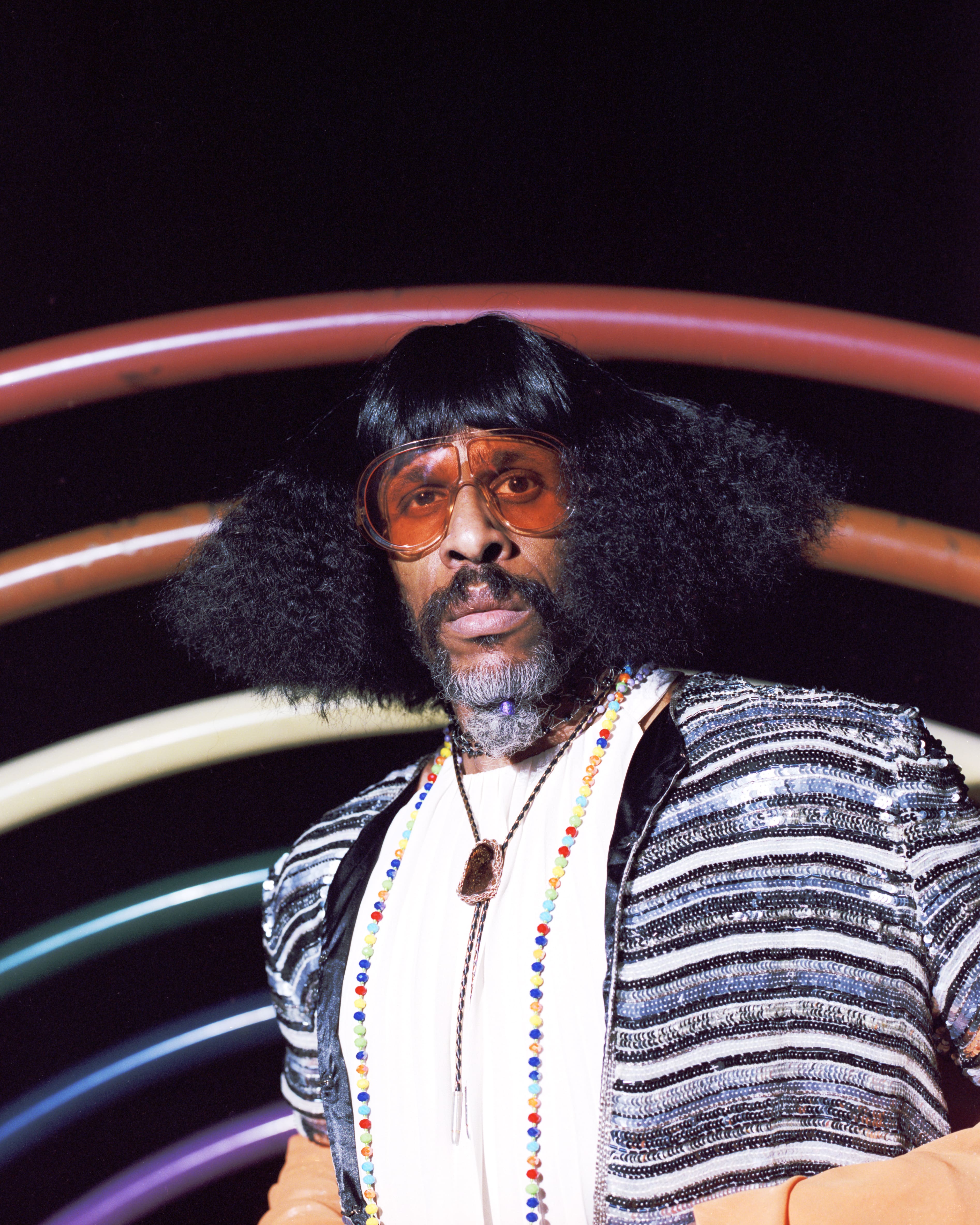Sickening! Sickening. Sickening. Sickening. Sickening. Sickening. Sickening. Sickening. Sickening. The word is sickening. I don’t even know who I would be if I didn’t have that sound as the backdrop for the way I was dressing at the time and even the way I dress now. It was at Twilo where the ways that I express myself through music and fashion became one singular practice.
Today it’s easy to just pull up your phone and type in the song you wanna hear and get excited; back then it was like “I have to make it to this club because I’m not gonna hear that song again ‘til next Saturday.” And if you were lucky — and I was lucky to have someone like Nita who could burn me a couple of CDs of songs from a friend of a friend in Japan — you could maybe hear that track that Junior played again. And I would listen to some of these songs forty, sixty times while getting dressed to hype myself up and learn the counts. You might not hear them in the club these days but I still listen to these songs when I know I’m getting ready to hit the streets.
Like what?
“Reap” by Vernessa Mitchell, the Junior Vasquez Extended Mix. It has this string section in it that’s so dramatic! When I really wanna feel that, like, smoldering sass, I put that song on. When I’m making an outfit, I put that song on. The lyrics say you reap what you sow, so I look at myself in the mirror and I really feel that moment.
The music of that era, like, I mean, I love the music of today, but a lotta girls don’t understand what a 90s vocal is anymore, they don’t understand the energy that a 90s, early 2000s diva vocal can bring! The girls just don’t know! And then y'all have songs that are like 3 minutes and 14 seconds and I’m like that’s not a song! 9 minutes and 28 seconds is a song, bitch!
13 minutes.
13 minutes is a song, bitch! You know what I mean? That Vernessa Mitchell edit is 11 minutes or something. And Junior would loop the beginning for five! Before the vocals even came in, girl! Like, what are you talking about? You girls don’t even know. He would play one song for 15, 20 minutes, bitch. And the girls would be screaming. Because we didn’t know the next time we were gonna hear it. We couldn’t just go home and play it. Back then it was like, you had to run to the dancefloor. He played it for that long because he wanted people to enjoy it, he knew we weren’t gonna hear it again for a while.

Another one, which I still get ready to from the Club MTV era, is Mariah Carey’s “Butterfly,” the Fly Away Mix.
I would listen to these songs over and over and over and over. I know every beat and every breath of these songs because they are a part of me now. There’s something about repetition, there’s something about hearing the song and then letting the song hear you. I take the time to really enjoy putting on my clothes to the music and seeing how the movement of my outfit complements the elements of the track. There’s something to that. I would see the base layer of my look as the kick drum, and then another part of my outfit or maybe a piece of my hair moving in time with the treble. My accessories were hitting the hi-hats or the new sound that came in during the bridge. That’s what I mean when I say I’ve learned the counts, and I dress for that. I learned that from the 90s sound.
One thing I’m really good at is making my outfits move with me — they express beyond my dimensions, they go outside of my own bodily sphere to take up space. I learned that at Twilo, on Saturday nights, for sure. That’s where I became known as that girl that looks like that, that moves like that. It’s not enough to just be editorial, where you hold the look. No, you have to be editorial in motion, where you have to look stunning and move at the same time. You actually activate the space by activating the look, by activating yourself. That, I think, is a very keystone of what Aviance does, and what I do. Injecting the ideas of form and function with the idea of imagination, putting all those things together. madison moore, in their book Fabulous, talks about experimenting with yourself at night and how that experimentation allows you to feel more confident in your day-to-day life, by taking those answers you find in the night and applying them all the time. And that was true for me, that’s what those nights at Twilo and Tunnel did for me.

And I’ll tell you, there were two things helping me get there — the music of the time, and acid. The music was expanding my mind in so many ways, but the addition of acid to that equation really helped me see the world in ways that I had never seen before. And that directly applied to my fashion.
In what ways?
All of a sudden, color spectrums and color palettes changed for me. The rules of fashion became less important to me — I was tearing them apart and throwing them away, never allowing myself to go back to the way I saw things before. That’s honestly why I dress the way I dress. I mean, I see plaid as a color, not as a pattern. I see floral prints as a color, not as a pattern. I started seeing shadows as colors, prints as colors, and size and shape as colors. Acid did that for me. I was coming up with new equations and new variables to plug into those equations.
What do you mean by equations? You’ve used that word a few times now.
When you’re growing up, you’re told that there are certain equations that make the world function the way it does. Then in your twenties and thirties, you start figuring out that not all those equations work for you. This one’s great, except for one piece that doesn’t work; this other one’s horrible except for this one piece that I’m gonna take out and apply to another equation. And you start really calculating the equations that work for you, calculating yourself in a way. Now that I’m in my forties, I’m really living in the equations that I’ve found work for me. And I’m unapologetic about the equations that I use. I surround myself with people who use the same equations.
So for my fashion, an equation is how I find my clothing, how I put together my clothing, when and where I wear certain outfits, how loud I want to be when I wear such outfits, deciding where I break the rules and when exactly to do it.
Even if it’s not written down, there are certain rules that people follow, rules for visual iconography that have taken hold over time. I’ve been actively learning these equations just so that I can break them. You have to learn the foundations so you can know when you’re breaking new ground. Otherwise you’ll never know if you’re actually doing anything new. If you don’t learn the foundations, you’ll look over your left shoulder and see someone doing the exact same thing as you but doing it better.
I see.

So this was all part of the process of becoming an It Girl in New York City. By the time I left college, a lot of the scenes had already seen me. Not just the gay scenes at Tunnel and Twilo, but at this point I could go through the straight entrance because the security guards knew me, and the bathroom attendants knew me. In fact, I even stepped away from the gay scene as a whole for a while; I started going almost exclusively to straight clubs, high-end clubs.
Why?
Because I was getting more attention and respect there.
Was there something happening in the gay clubs that wasn’t sitting right with you? Why did you leave?
Looking back, using the vocabulary we have now, I was very non-binary. I was very queer. And as anyone who fit into those realms may know, if you're not giving butch-masc, if you’re giving any sort of high femme, it was difficult to feel seen in gay culture, especially then. So I was like “Oh, I don’t have to deal with this. I can go to the clubs the gays can’t even get into.”
Where was this?
Lot 61, Bungalow 8, Moomba, a place called B Bar. And B Bar was gay but it was a place in the East Village where you could be served dinner and listen to music. People like Sophia [Lamar] and Amanda [Lepore] would be there, so that became the kind of place for me that felt exclusive enough that I could really feel the kiki, you know what I mean? And I would get there really early and just give full runway, give full shows, like braids down to the floor with beads so that when I did my spins they would wrap around my body twice and hit things on the way out the door. Really turning up the drama. That’s something I just finessed, being myself and learning what it means to be Aviance. Being in these straight clubs gave me this backdrop to stand out against.
One Halloween, I walked into Bungalow 8 wearing only black underwear, a pair of converse sneakers, and pheasant feathers that went over my head held on by a black leather choker, accented by black make-up. And it was exactly the type of drama that made sense in that space at that time. I was a queer black queen with my entire body exposed, yet so intentional and specific about exactly what I was wearing down to the black leather clutch purse. I was one of the only ones really doing that there.